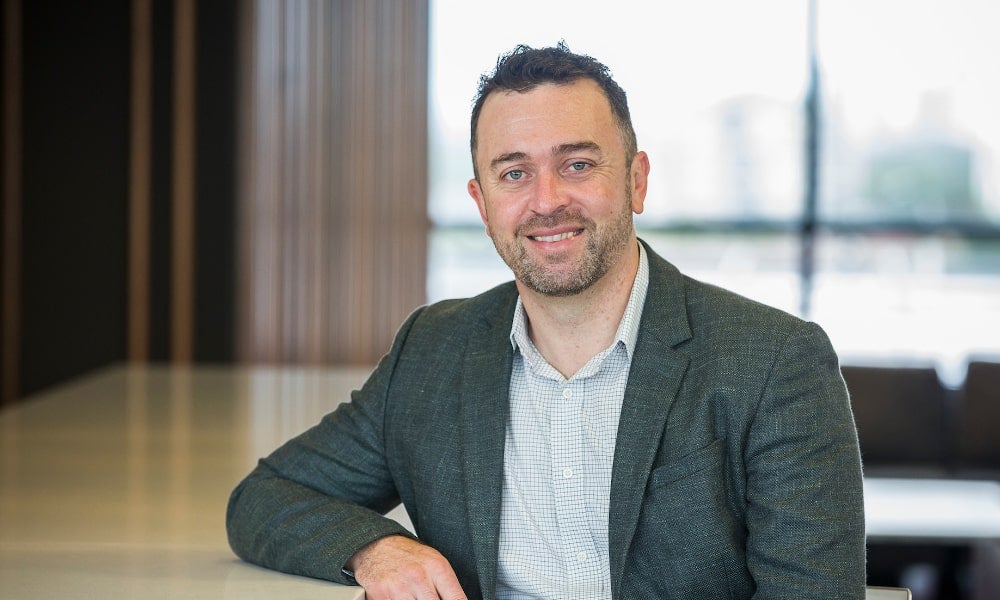Mastering organisational change: Three proven strategies for success
Research-backed change management strategies are essential to introducing new initiatives, securing employee support, and enhancing overall business success
Imagine you're a forward-thinking leader navigating the dynamic terrain of organisational change. Faced with the pressure of implementing new initiatives, securing employee buy-in, and aligning with your business’s overarching goals, you recognise the need for an evidence-based approach.
Effective change management is the linchpin for organisational success. However, change management skills and strategies should be backed by research findings to be effective. All change managers need practical strategies that optimise resources, enhance adaptability, and boost employee morale. So, where do you look for evidence-based support?
UNSW Business School’s Dr Andrew Dhaenens interviewed Dr Bradley Hastings on the value of business research insights in empowering organisations to navigate some of the biggest challenges expected to impact businesses in the year ahead. Dr Hastings is a Research & Insights Associate at UNSW’s Business Insights Institute, while Dr Dhaenens is a Lecturer from the School of Management & Governance and co-leads the Hybrid Work Leadership Research Lab. During the interview, the two management experts discussed three key insights where research-driven approaches have paved the way for successful change management.
Impact of AI and technological advances on business
While consulting and engaging with businesses, Dr Hastings has identified several recurring challenges. One of the most significant impacts highlighted is the rapid evolution of technology, with a particular focus on the associated risks and rewards of artificial intelligence (AI).
In 2024, major Australian companies are expected to grapple with understanding and incorporating AI into their operations, addressing concerns about threats, and needing to stay abreast of technological advancements. However, according to the data, only 5 per cent of Australian businesses are fully prepared to utilise AI in their operations, which poses a significant challenge. So, where should change managers begin when implementing AI and new technology?
The first challenge is sifting through the vast information overload. “Information gathering, or information overload (which is maybe a better way of framing the data)... there's so much information there, it's hard to have an objective view…particularly when the focus of the question is changing," said Dr Hastings.
“We may have a great information system for certain types of decisions. And that's great. That's what we do. We systemise things and make it easier, but then the landscape changes, and it's like, well, hang on, it's a murky pool of information. How do I make sense of that?”
Given the vast amount of data businesses face daily, effective information gathering and sense-making in decision-making processes are more critical for businesses than ever before. While acknowledging the value of information systems, AI, and big data in processing vast amounts of information, Dr Hastings also emphasised the limitations of these tools in capturing the nuances of real-world situations. So to be effective, he said there must be a balance between technological solutions and human-centred approaches.
“In many cases, we're talking about big data and, you know, using AI to process information. I think that AI has a role here in that it can have the power to combine vast bits of information and analyse them in ways that humans just can't do. And we don't have the mental capacity or bandwidth to consider the factors that might combine to predict a specific outcome. So, AI has a place there,” he said.

Workforce challenges in the changing business landscape
Another recent development in change management has been that, in many ways, leaders no longer make the big decisions; instead, they empower their workforce to make the significant changes themselves. In this way, the role of change leaders today is “to create the space where people can come forward and build brighter futures. And we're not there yet in terms of that kind of change in leadership,” explained Dr Hastings.
“I see HR providing a role in that guidance, you know, what does work in this space look like? What are the leadership concepts that work in these particular situations? How do we coach training and develop leaders to open up those spaces for people to come forward and bring the best versions of themselves and contribute to a positive future?”
Speaking on the challenges of hiring and retaining talent, Dr Hastings also emphasised the difficulty of attracting younger generations with different values and priorities, especially in sectors like health. Here, he explained, research-backed strategies specifically for leaders and HR professionals can inform how they create environments that appeal to the evolving preferences of the workforce, considering factors like societal impact, work experience, and ethical considerations.
Predicting employee retention remains a complex challenge for HR departments and business leaders. Tools like AI, for example, can aid organisations in foreseeing employee turnover and significantly enhancing retention rates, addressing the substantial costs associated with recruitment and training, particularly as studies indicate a high intention among Australian workers to leave their jobs.

The value of active listening
Finally, Dr Hastings shed light on a critical leadership trait that often goes overlooked — active listening. “Listening is the one leadership characteristic, which is, you know, the most consistently and highly correlated with effective leadership outcomes. And that applies to organisational change as well.
“I've studied this myself, and you know, and what I found was that it was the leaders who, who went out and took the time to walk the talk with their people and listen, were the ones that lead much more successful organisational change programs.”
Leaders who practice active listening, and invest time in genuinely engaging with their teams, are more successful in driving organisational change. According to Dr Hastings, frontline employees should be seen not just as bearers of issues but also as a valuable source of opportunities for positive actions that align the team with the business's change initiatives.
Unlike conventional methods like readiness assessments, Dr Hastings said that sometimes you need "good old-fashioned listening" and the willingness to act on the insights gained from these interactions.
In gathering data, for example, effective leaders, as observed by Dr Hastings in his work, actively listen to concerns, take tangible actions, and communicate the steps they've taken. This approach, he said, increases motivation for change, as employees witness tangible improvements based on their feedback.
Read more: How to make better decisions with evidence-based management
“The reason for that is that these people who work on the front line, these people who work in the organisation are going to have ideas and they're also going to have issues and things that are not quite working for them,” he explained. “I don't see them as issues, I see them as a rich source of opportunities and actions, which if I undertake, I can help get my people on the side with this change really, really effectively.”
“What I then find is that the motivation for change actually really increases, because people are starting to see things change, and starting to see things that they care about, actually change or improve. And that's a great way of getting people on board with change.
“I don't think it's a matter of doing a readiness assessment, or a cultural assessment or anything like that, I think it's good old-fashioned listening, and being prepared to take action on some of the stuff we hear.”
Beyond data analysis, Dr Hastings also encouraged leaders to actively engage in observation by physically immersing themselves in their environment, such as spending time at the front line. This hands-on approach provides valuable insights into how things work and identifies issues that may not be evident in data alone.
“Go out and have a walk. Go out and have a walk around, go and spend a day at the front line, and watch and listen and see it. That good old-fashioned kind of observation brings a huge amount of data around how things work and how they don't work,” he said.
Why? Because organisations that solely rely on data insights, he said, often end up making poor decisions. Instead, he urged businesses to combine data-driven insights with real-world observations for more informed and effective decision-making.
Subscribe to BusinessThink for the latest research, analysis and insights from UNSW Business School
“I've worked with organisations in my career that have purely looked at the data and made really terrible decisions, multimillion-dollar investments, which were not necessary, had they gone on that walk and looked around," said Dr Hastings.
“AI and big data, all these new ways, are all fantastic ways of adding to our ability to make better decisions. But I wouldn't discount that, you know, spending better time going around and walking a mile in a customer's shoes or a frontline worker's shoes, and just seeing what it's like.”
